“I can fight four guns and a knife,” said Avi Nardia, addressing a small class of ten students gathered for a three-hour knife- and gun-defense seminar. Held at Sensei John Ingallina’s UMAC facility in Brighton, New York (one of two locations), the seminar was one I heard about at the last minute on Facebook. With the help of another student I was able to make arrangements to attend. When Avi made his statement about confronting multiple firearms, I knew a moment’s doubt.
Avi dispelled that doubt when he proceeded to throw the four rubber guns and the wooden training knife on the floor in front of him. Then he struck a pose with his fists, challenging the weapons to a fistfight. When the class got the joke, he explained: When fighting a knife or a gun, you don’t fight the weapon at all. You fight the man holding it.
The three-hour seminar was full of gems like those. Avi is an extremely personable instructor with a down-to-Earth manner and very definitive opinions about what works and what does not. He downplays the categorization of technique as one style or another, recognizing that functional, workable methods are what they are whether they are called Sambo, FMA, or Krav Maga. On this last system, however, Avi was very explicit: What he does (KAPAP) is not Krav Maga. He cited very specific techniques and methods taught in the Israeli Army as Krav Maga that he does not believe are workable — what he termed “training for death.”
It was clear, too, that Avi’s attitude is one of using only necessary force. He spoke of compassion more than once, describing some of the talk of killing among less restrained self-defense instructors as “crazy.” While we were being taught potentially lethal methods for dealing with potentially lethal assaults, Avi’s good nature dominated the training, encouraging a similar attitude among the participants.
Most likely by design, the more strenuous activities were front-loaded, leaving the less physically demanding firearms disarms for the last hour of the class. Students started on the ground “to get you comfortable with what we are doing,” as Avi put it, practicing using their feet while on their backs to fend off an assault from someone who is attempting to mount and stab them. This naturally progressed to grappling for position while trying to disarm the opponent, which resulted in a give-and-take as the training blade transferred from student to student.
Building from one iteration to the next, we then worked from a standing position, attempting to fend off and then grapple with an opponent approaching with a knife. A hubud-like slap-check-and-strike was used for some of these standing drills. In others, the back of the hand, wrist, and arm were used to position the opponent’s blade arm while fighting to stay on his “blind side,” tight to him, melded into fighting for that blade on the mats again. Students even experienced multiple opponents, attempting to fend off first one, then a second opponent simultaneously.
Through it all, Avi stressed safety and emphasized that we were not attempting to kill each other; we were attempting to learn and to experiment. He scoffed at the notion that it is possible to “train as you fight,” for if you truly did that, he explained, your training partner would be dead. He spoke specifically of the element of theory involved in martial arts practice. The only way to truly “train as you fight” is to go out and get into potentially deadly fights.
After a grueling two hours of grappling on the mats and fighting off knives from a standing position, the gun disarms were not so strenuous. Avi showed the class multiple methods for disarming a firearm, including the importance of getting two points of contact on the firearm to prevent it from being pulled backward and fired by the assailant. Students worked rotating the gun up and back toward the attacker, slapping it out of the attacker’s hand, and snatching it with a similar strike-and-grab while seated (as if in an airplane that has been hijacked).
This was a worthwhile class and Avi is an excellent teacher. I found all of the attendees (several of whom, it turns out, are instructors at UMAC) extremely welcoming and helpful, willing to permit a training partner to “win” in order to teach him or her to exploit an available opening. This quality is invaluable in a teacher and more than helpful in a fellow seminar attendee.
The material covered was also extremely valuable, as it both highlighted some flaws in past counter-weapons training while offering solutions to these shortcomings. I would, without hesitation, recommend Avi Nardia’s training to anyone interested in practical self-defense. Avi characterizes what he does as rooted in traditional martial arts, but the content of this class was the most practical of pragmatic, reality-based training.
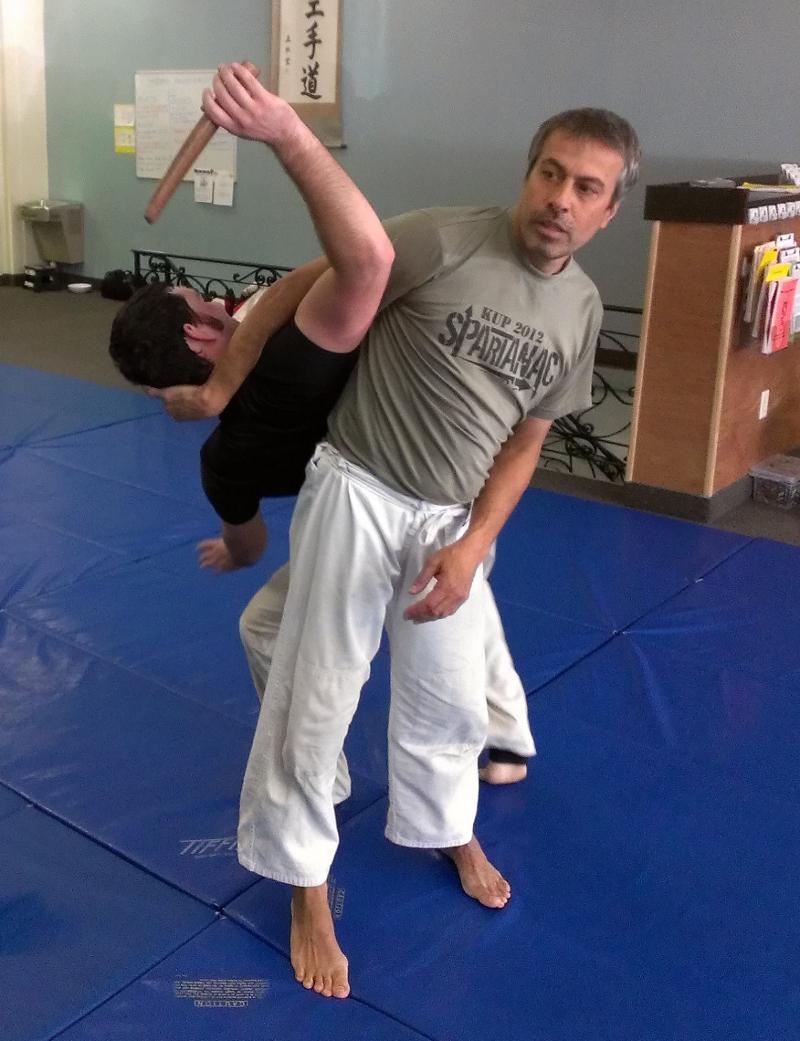
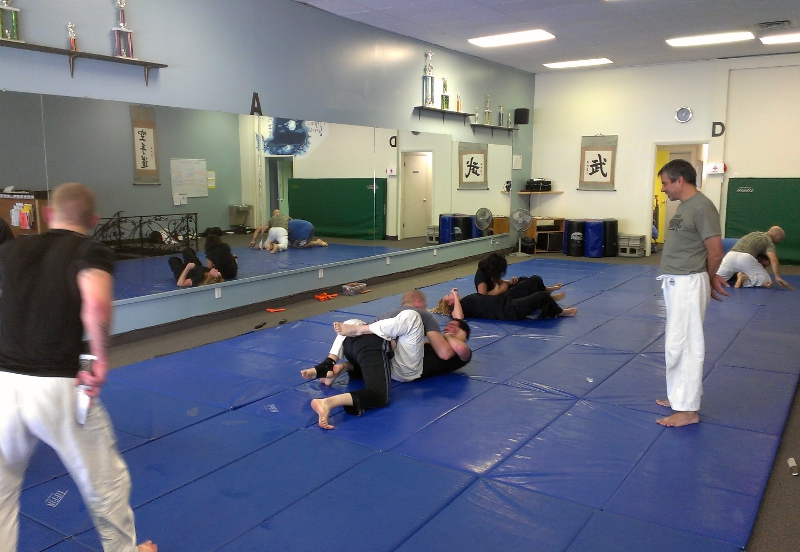
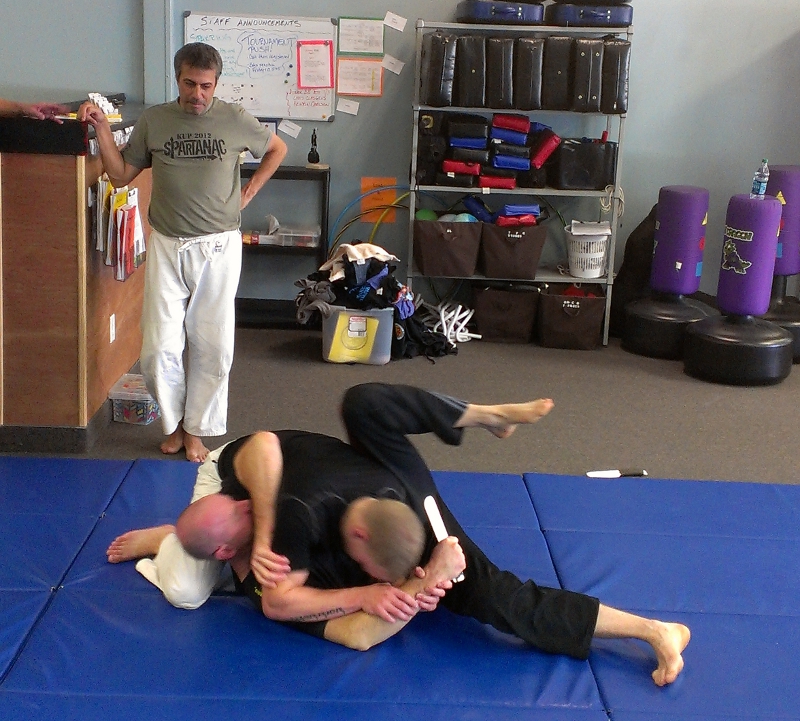
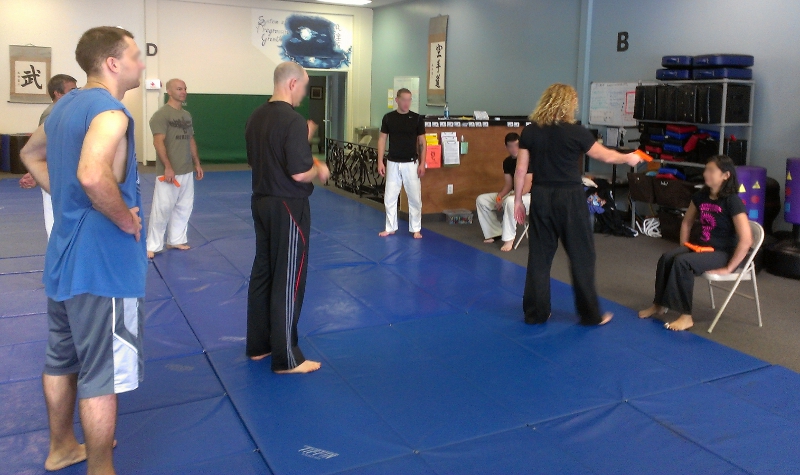
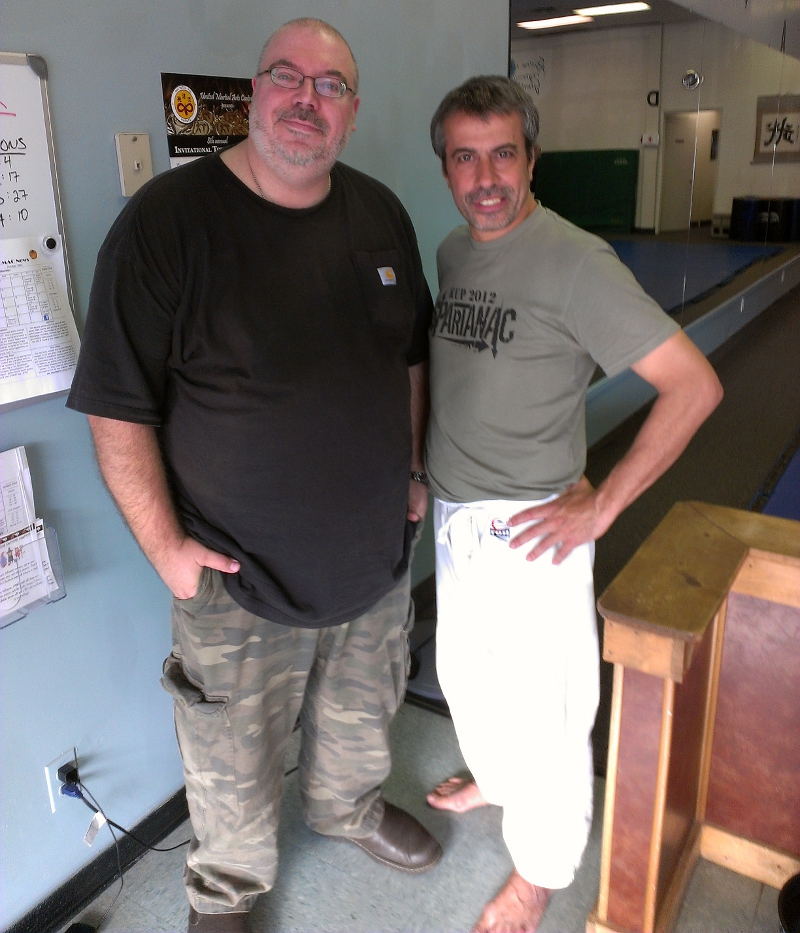
Phil: You have captured some of the essence of the man – Avi Nardia gets deeper as you get to know him, and he will always have something new to offer. I’ve never met someone with his depth of knowledge, nor his good nature, nor his in your face abilities. He’s as humble as one would hope and expect. Don’t let his size fool you. Don’t let his quiet nature fool you. Avi is capable of many things, many of which I hope to experience, but many that I’m sure I never will – that doesn’t make me waiver. Sadly, Avi is also so well respected for his abilities, world-wide, that nailing him down has also become an art! Avi travels the world teaching military and LEO units, as well as civilians. He’s booked many months in advance. I’ve been able to spend some quality time with him, one on one, and my head hurts after a long day of visiting. It’s always something new, something shared, and best of something something NOT planned! Thank you for this article – I hope that it reaches many new converts, and thanks for taking the time out to attend his seminar. I knew you’d enjoy it, but didn’t expect this bonus review of it!
thanks for the right up. I just finished attending the 3 day Kapap workshop (I only attended 2 as invitee) and it awesome.
Too bad the locals in Rochester don’t realize what an awesome instructor Sensei Avi is.
That was a very interesting article , thanks . A question for you sir , if i was to buy one book on knife fighting which one would you suggest ?
thanks , keep up the good work !
I wouldn’t recommend just one book on knife fighting — I would encourage you to read as many of them as you can. You can’t really learn to “knife fight” from a book, but it makes for interesting reading. The best way to learn to use a blade is to engage in some kind of Filipino Martial Arts training, in my opinion.